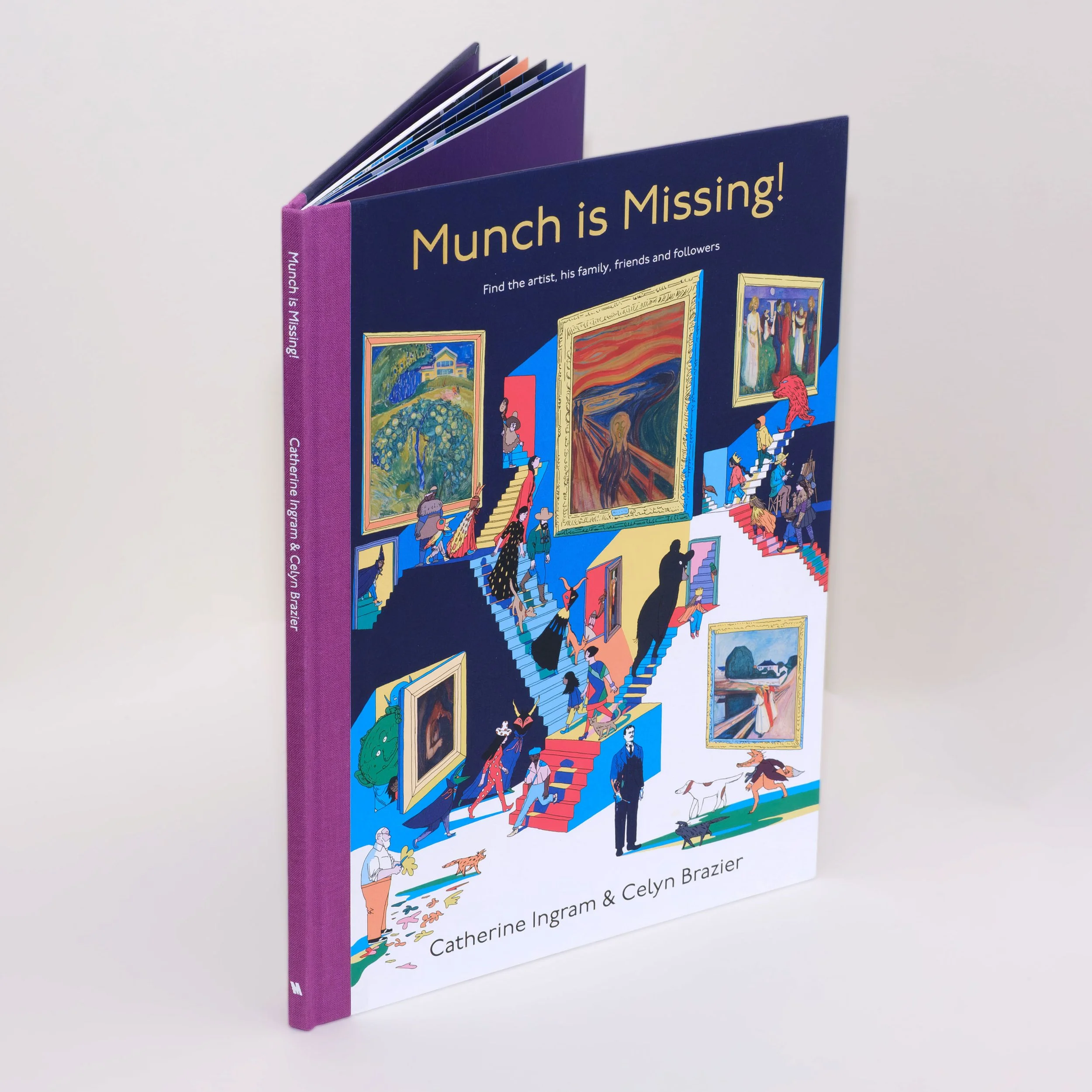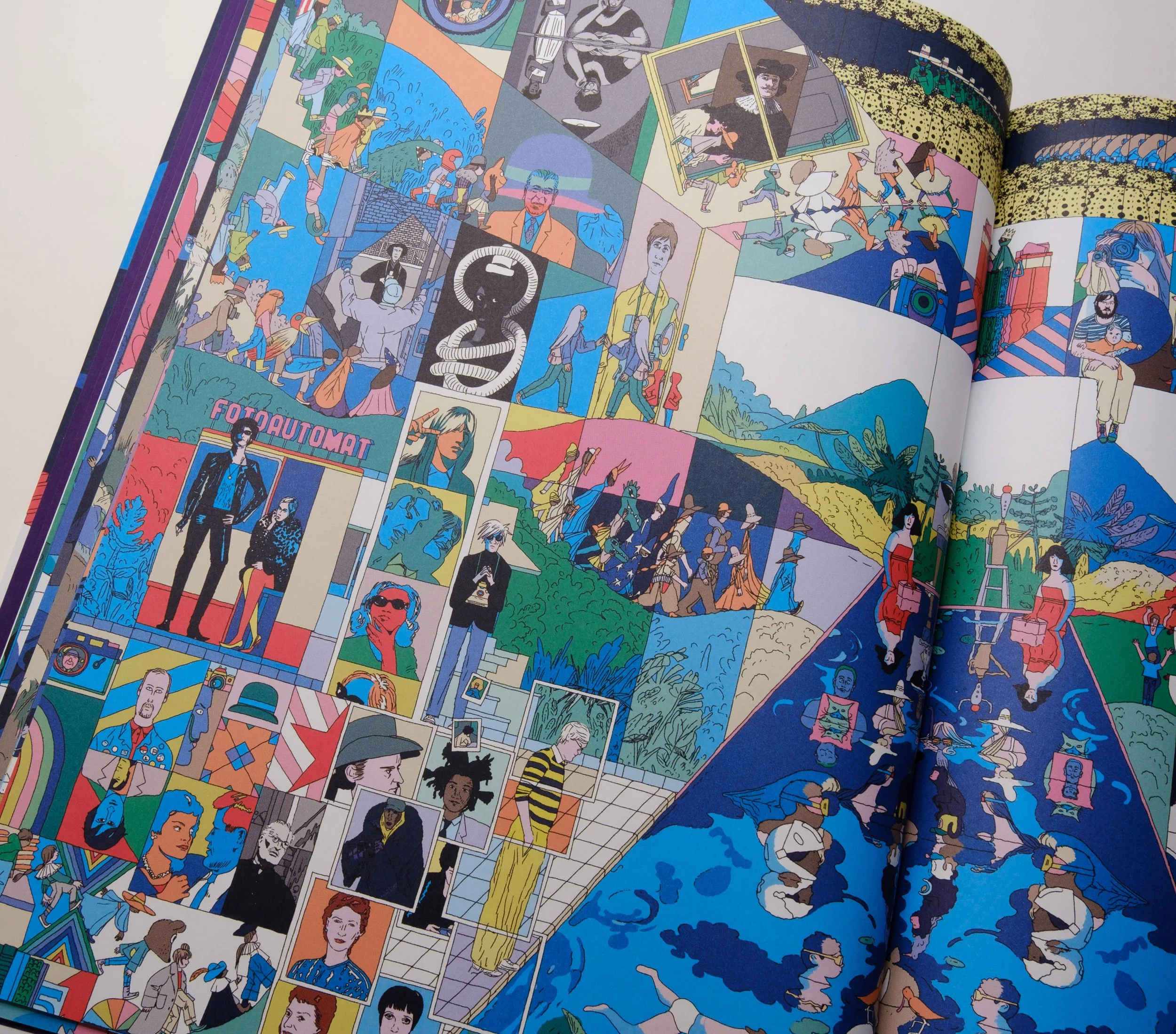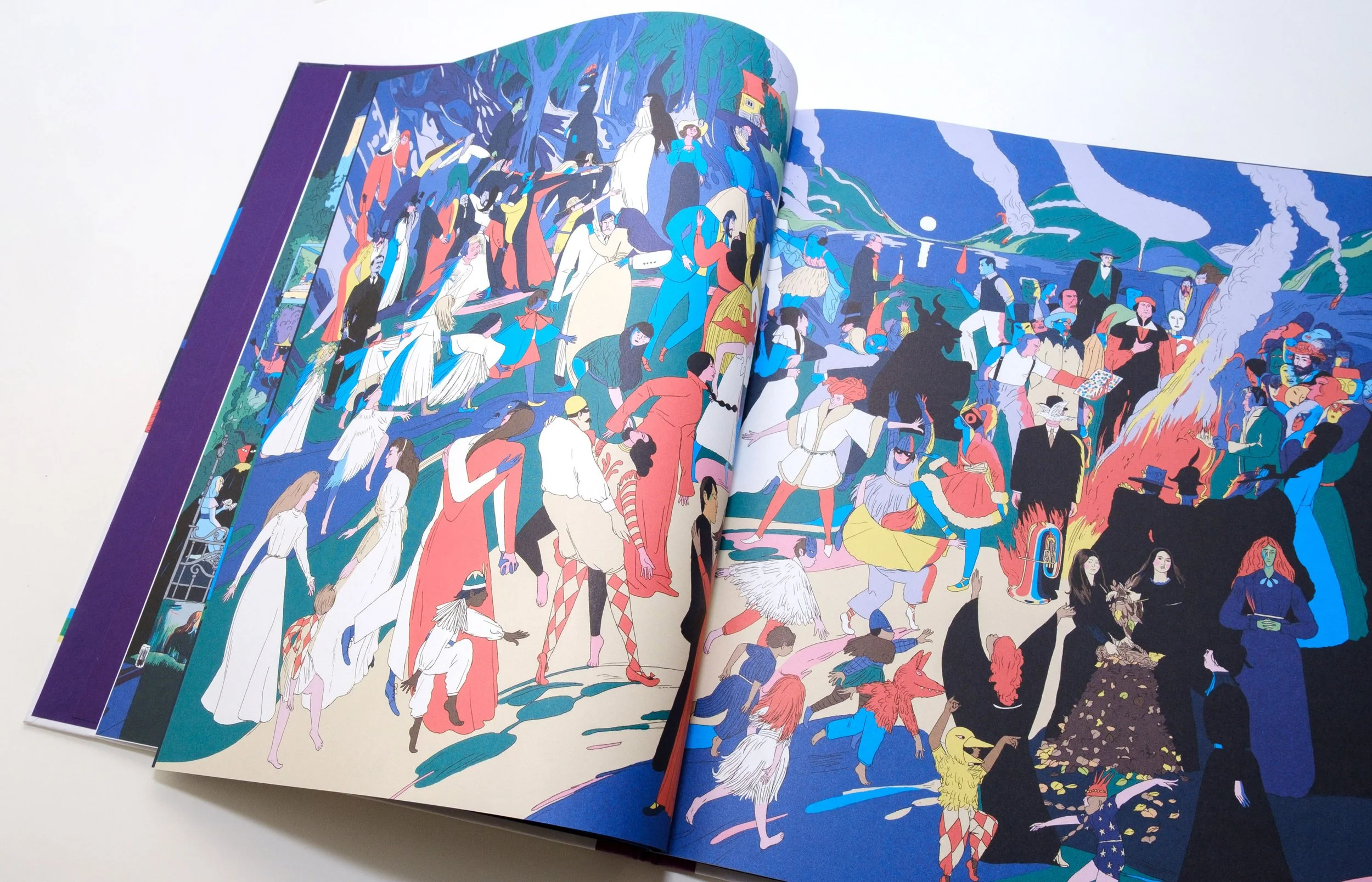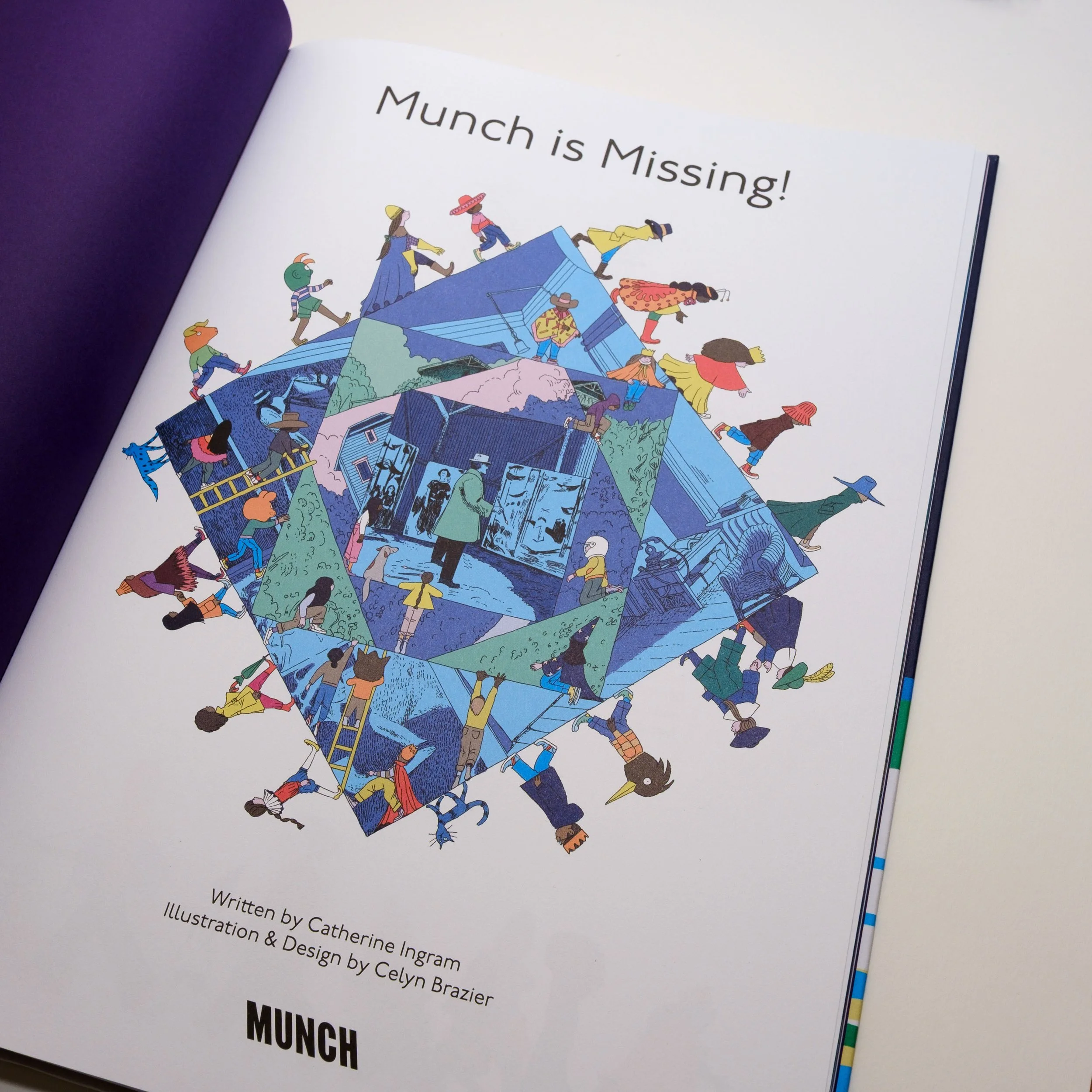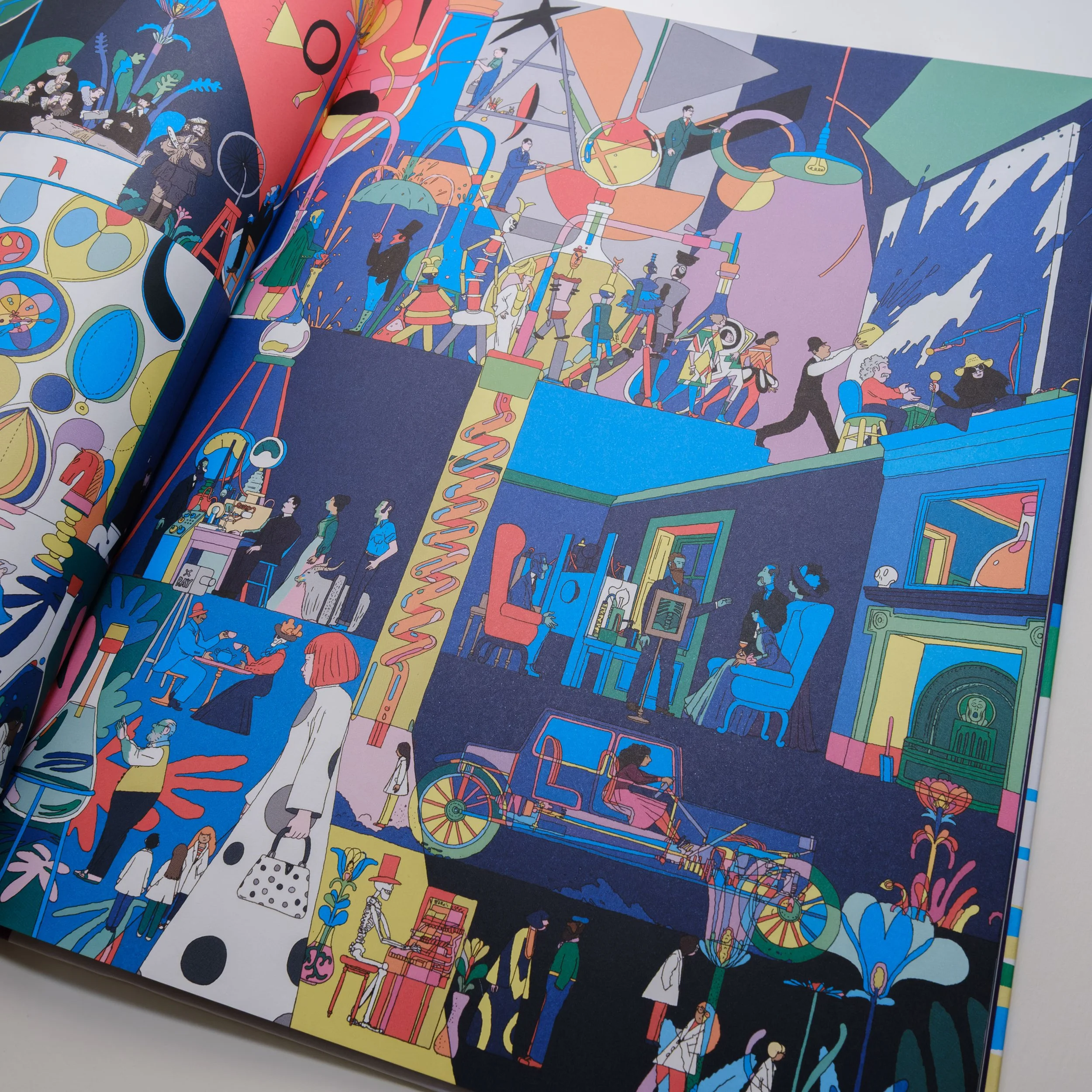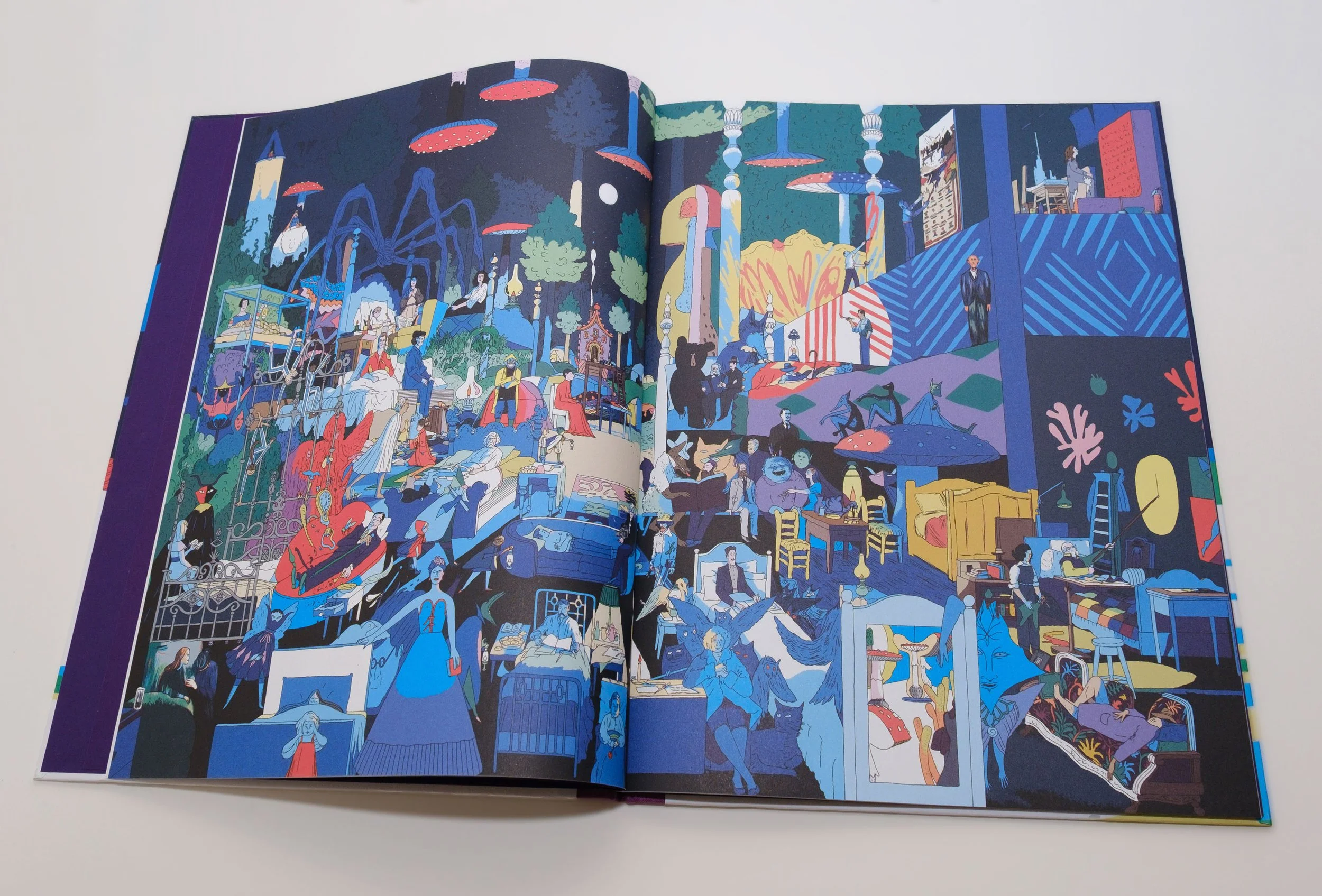Munch Is Missing
Munch is Missing, written by Catherine Ingram and illustrated by me is a visually rich and research-driven exploration of Edvard Munch’s world—his life, his landscapes, and the lasting impact of his work. The book is built around twelve double-page spreads. Each illustrated scenes invites readers to find Munch hidden among environments inspired by key moments, places, and ideas from his life. Each image is hand-drawn, and designed not just as an artistic tribute, but as a layered narrative space filled with visual storytelling.
The illustrations are grounded in extensive research—historical, geographical, and artistic. I delved into Munch’s personal life, the shifting societal landscape of late 19th- and early 20th-century Europe, and the many creative figures and movements that surrounded or followed him. The challenge was to reflect Munch’s world in all its complexity—touching on themes of sleep, death, isolation, theatre, and psychological depth—without becoming didactic.
From the forest near his home in Ekely to the dramatic stage of an Ibsen play, each scene is carefully composed to tell a stand-alone story. You’ll find the DNA in many he influenced—painters, performers, and visionaries from different times and places—all woven into the fabric of the illustrations explained by Catherine Ingram’s words
The work is entirely hand-drawn. I wanted the book to retain a tactile, expressive quality—where each page feels fluid, kinetic and alive with movement and possibility. Creating this book was as much about drawing as it was about studying: every figure, background, and detail demanded a sensitive approach, ensuring historical references were accurate while still allowing room for artistic interpretation.
Munch is Missing is ultimately about looking closer Munch and how he connected with the world and it to him. It’s a visual experience that encourages curiosity beyond these pages—about art, about history, and about the life of one of modernism’s most emotionally charged and influential artists. To do this it was essential to make it an accessible introduction to the Munch story.
For me, the project was a unique opportunity to bring together research, imagination, and visual craft—resulting in a book that, I hope, both honours Munch and sparks new ways of seeing his paintings and influences anew.

